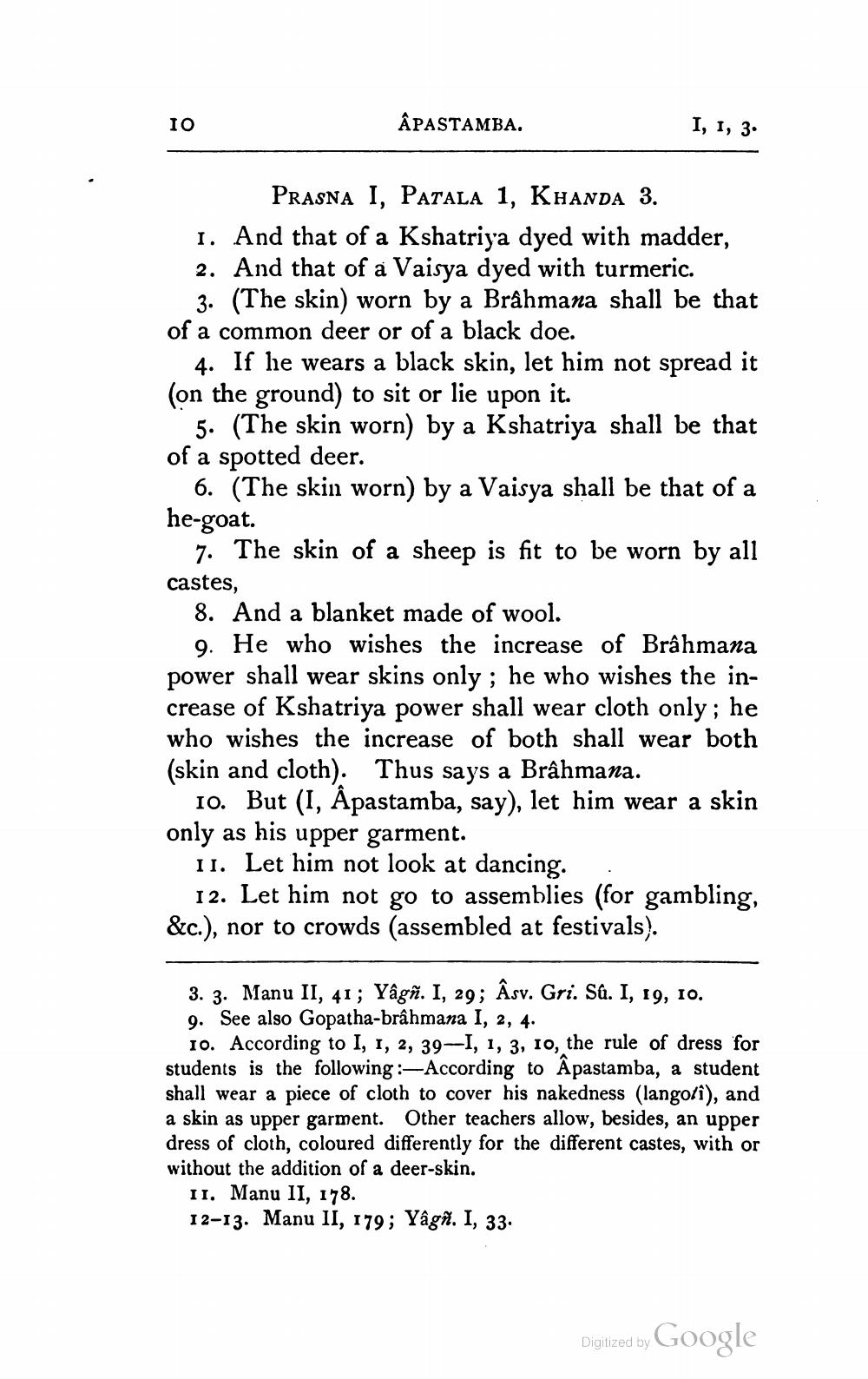________________
IO
ÂPASTAMBA.
I, 1, 3.
Prasna I, Patala 1, Khanda 3. 1. And that of a Kshatriya dyed with madder, 2. And that of a Vaisya dyed with turmeric.
3. (The skin) worn by a Brâhmana shall be that of a common deer or of a black doe.
4. If he wears a black skin, let him not spread it (on the ground) to sit or lie upon it.
5. (The skin worn) by a Kshatriya shall be that of a spotted deer.
6. (The skin worn) by a Vaisya shall be that of a he-goat.
7. The skin of a sheep is fit to be worn by all castes,
8. And a blanket made of wool.
9. He who wishes the increase of Brâhmana power shall wear skins only; he who wishes the increase of Kshatriya power shall wear cloth only; he who wishes the increase of both shall wear both (skin and cloth). Thus says a Brâhmana.
10. But (1, Åpastamba, say), let him wear a skin only as his upper garment.
11. Let him not look at dancing.
12. Let him not go to assemblies (for gambling, &c.), nor to crowds (assembled at festivals).
3. 3. Manu II, 41 ; Yâgñ. I, 29; Âsv. Gri. Sa. I, 19, 10. 9. See also Gopatha-brâhmana I, 2, 4.
10. According to I, 1, 2, 39-I, 1, 3, 10, the rule of dress for students is the following :- According to Apastamba, a student shall wear a piece of cloth to cover his nakedness (langoli), and a skin as upper garment. Other teachers allow, besides, an upper dress of cloth, coloured differently for the different castes, with or without the addition of a deer-skin.
11. Manu II, 178. 12-13. Manu II, 179; Yâgñ. I, 33.
Digitized by Google




